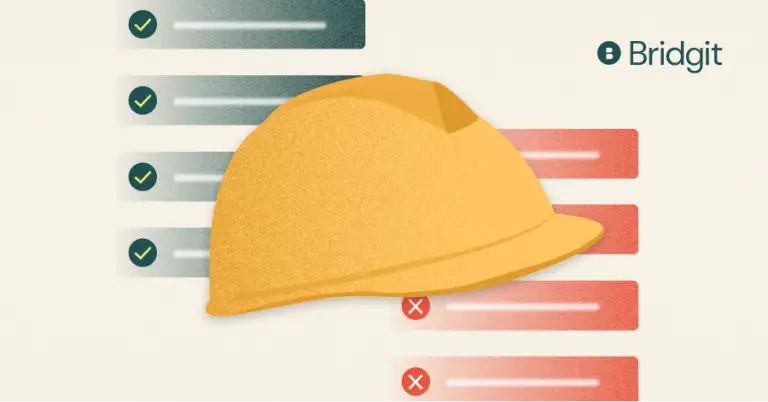Construction workers are the backbone of projects, and laborers play an important role in making projects on paper a full-fledged reality. But the question of what exactly construction laborers do may weigh your mind. Furthermore, if you’re looking to hire workers, you might wonder what to include in your construction laborer job description.
Table of Contents
Here’s what you need to know about their responsibilities and their expected salary.
What is a construction laborer?
Construction laborers are the workers who perform physical tasks on construction sites. They usually work under the supervision of a foreman, and along with carrying out activities associated with the project’s building plan, some workers have the additional title of helper. Helpers are expected to assist with painting, plumbing, carpentry, etc.
Some construction laborers only work during specific seasons since unfavorable weather can disrupt the ability to complete tasks sufficiently. Often, their jobs are at the mercy of the weather, as rain and snow can significantly affect the quality of the work being performed.
To make up for lost time, laborers must work weekends and evenings to ensure everything that needs to be done is completed while the good weather lasts. They also often work evenings when placed on infrastructure projects (such as bridges or highways) to minimize traffic disruptions.
In terms of the work environment to describe when writing out a construction laborer job description, construction laborers must work on a variety of different building sites, including:
- Residential properties
- Commercial businesses
- Demolition sites
- Waste removal locations
- Roads
- Tunnels
This job is not only physically demanding but can be dangerous. While personal protective equipment is a given, it’s important to note that this industry has the highest number of injuries and deaths of any sector, so laborers must be trained and well-versed in safety practices.
What do laborers do in construction?
So, what specific responsibilities and duties do construction laborers carry out?
Construction laborers are expected to:
- Prepare construction sites by moving obstacles
- Transport construction materials, unloading and loading them
- Position construction materials according to instructions, as well as secure them
- Assemble and disassemble temporary structures like scaffolding
- Operate light and heavy machinery
- Pour foundations
- Clear out any debris left over
Construction laborer salary
Now that we’ve answered the question, “What does a laborer do in construction?”, you’ll want to know how to compensate your employees for the work they put in fairly.
According to the U.S. Bureau of Labor Statistics, the median annual wage for construction laborers is around $37,000. The lowest 10% earned less than $28,000, while the highest 10% earned more than $62,000.
Of course, the salary paid to workers can vary depending on a few factors.
One factor is the area that a laborer operates in, as it can fluctuate to adjust to their local region’s cost of living. The U.S. Bureau of Labor Statistics indicates that the highest-paying states for construction laborers are the following:
| State | Annual mean wage |
| Hawaii | $66,000 |
| Illinois | $65,000 |
| New Jersey | $65,000 |
| Massachusetts | $64,000 |
| New York | $59,000 |
Another factor that influences pay is the industry the construction laborer is working in. Here are the top-paying industries for construction laborers that you may want to keep in mind when creating your construction laborer job description:
| Industry | Annual mean wage |
| Pipeline transportation of natural gas | $81,000 |
| Electric power generation, transmission, and distribution | $65,000 |
| Other support services | $61,000 |
| General medical and surgical hospitals | $57,000 |
| Rail transportation | $56,000 |
Salaries can also vary depending on project circumstances. Construction laborers are often expected to work overtime to meet deadlines, and how much they work depends on external factors and construction risks. This variable affects their yearly pay.
These figures may also be different for construction laborers who are self-employed.
For construction apprentices, pay begins at 60% of a full-time professional’s wage, with incremental increases.
Qualifications to become a construction laborer
When it comes to attracting the most qualified candidates, you’ll want to specify the right qualifications for your construction laborer job description. Here’s what qualifies someone to work as a construction laborer.
Education and experience
The job of a construction laborer has no formal educational or training requirements. Plenty of laborers are hired without a formal background in construction—however, the best candidates will have an apprenticeship and a bit of experience under their belt.
An apprenticeship program requires a certain amount of hours to be completed, and apprentices learn valuable skills like equipment use, safety protocols, and more. These programs ensure that training takes place on the field, with apprentices working under the supervision of more seasoned and experienced workers.
Skills and traits
Construction laborers should possess a few innate skills and traits that qualify them to complete tasks sufficiently. They include the following:
- Strength, fitness, and stamina – Construction laborers can work long and strenuous hours, expected to carry out hands-on tasks like transporting materials and operating equipment
- Good vision – Being able to see what you’re doing is important on construction sites, especially when it comes to tasks that require differentiating wires and tools
- Basic math abilities – While advanced calculus is not necessary, knowing how to add, subtract, measure, and calculate is vital, as they play an important part in this role
Improve labor management with Bridgit Bench
Knowing what to put in a construction laborer’s job description will attract qualified candidates to make your construction projects a reality.
Once you’ve hired the right amount of labor, you’ll need an effective way to manage your workers. For that, consider enlisting the help of Bridgit Bench, an all-in-one workforce management solution.
With Bridgit Bench, users can better manage construction personnel, planning their workforce strategically while realizing the potential of existing employees.
Request a demo with Bridgit today.


